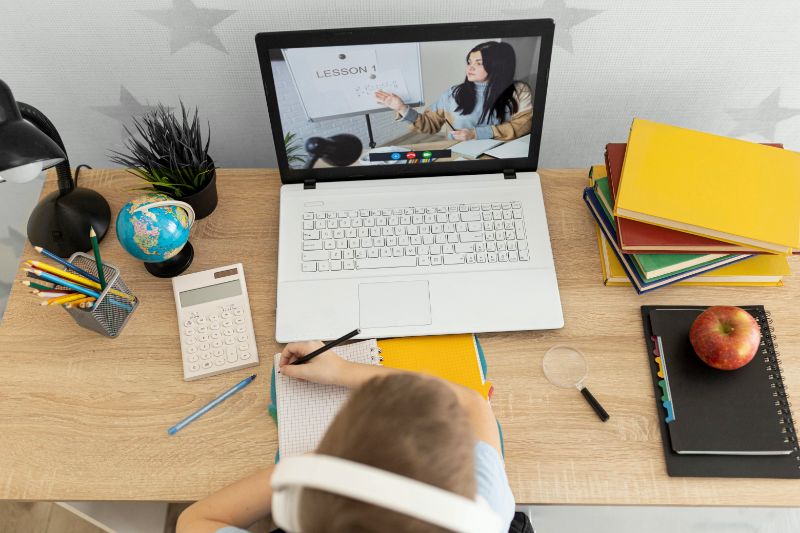When creating a virtual classroom, it is important to utilize interactive tools and reliable platforms. These tools may include video conferencing, discussion boards, and whiteboards to facilitate engaging sessions.
Establishing clear rules for student conduct and participation is essential, as well as setting expectations for behavior and deadlines.
Timely feedback and personalized support should be provided to enhance the online learning experience effectively.
Creating A Virtual Classroom
When developing a virtual classroom, the main objective is to create interactive and engaging online learning opportunities. Virtual classrooms serve as a vital platform for delivering education remotely, surpassing the constraints of traditional physical classrooms. Within this digital realm, students can take advantage of asynchronous learning, enabling them to study at their own pace and tailor their learning experience.
Establishing a virtual classroom entails constructing a conducive online space through the use of tools like video conferencing, discussion boards, and pre-recorded lectures. The significance of virtual classrooms lies in their capacity to promote student-instructor and peer interactions, fostering a collaborative learning environment. Moreover, integrating the school’s learning management system (LMS) is crucial for effective course administration and content organization.
Virtual Classroom Rules
Establishing Virtual Classroom Rules is essential for maintaining a structured and conducive learning environment. It’s imperative to clearly outline guidelines for student conduct, including expectations for participation, assignments, and interactions with peers. Setting boundaries for respectful communication, meeting deadlines, and actively engaging in discussions is crucial.
Communicating the consequences of violating these rules is important to uphold order and respect within the virtual classroom. Regularly reviewing and reinforcing these rules helps students internalize expected behavior and promotes accountability. By fostering open communication and addressing misconduct promptly, a positive and supportive virtual classroom atmosphere can be cultivated, enabling all students to succeed.
The primary objective of implementing these rules is to facilitate effective learning, collaboration, and personal growth among all participants. Consistency in rule enforcement and communication is key to creating a productive virtual learning environment where students can thrive academically.
Virtual Classroom Ideas
In order to improve the virtual learning experience, it’s recommended to incorporate innovative tools and techniques that encourage interaction and engagement among students in the virtual classroom. Utilize a reliable virtual classroom platform such as Zoom, Google Classroom, or Vibe to seamlessly set up virtual sessions. Interactive tools like whiteboards can facilitate real-time collaboration, while features like screen sharing allow for the sharing of presentations and videos to enhance online learning. Video conferencing capabilities can further enhance the virtual classroom experience by enabling face-to-face interactions.
Encourage student engagement by utilizing chat boxes for communication and participation. Additionally, the implementation of a learning management system can help streamline the organization of course materials and assignments, allowing for asynchronous learning where students can access content at their own pace. By focusing on student access and interaction through these strategies, a dynamic virtual classroom environment can be created that promotes active participation and effective learning outcomes.
Virtual Classroom Management Tips
To effectively manage a virtual classroom for student engagement and success, it’s important to establish clear communication channels for questions and clarification. Setting guidelines and expectations for student behavior and participation is crucial to create a conducive learning environment.
Utilizing interactive tools within the virtual classroom can enhance engagement and promote active participation. Monitoring student progress through analytics allows for personalized support when needed. Providing timely feedback helps reinforce positive behaviors and correct misunderstandings promptly.
Implementing these management strategies can create a productive virtual learning environment for both students and instructors.
Conclusion
Now that you have learned how to create a virtual classroom, remember to establish clear rules, implement engaging ideas, and use effective management tips to ensure a successful learning environment.
By following these steps, you can create an interactive and productive virtual classroom that promotes student engagement and learning.
Keep exploring new strategies and tools to enhance the virtual learning experience for both you and your students.
Good luck on your virtual teaching journey!
Read More:
